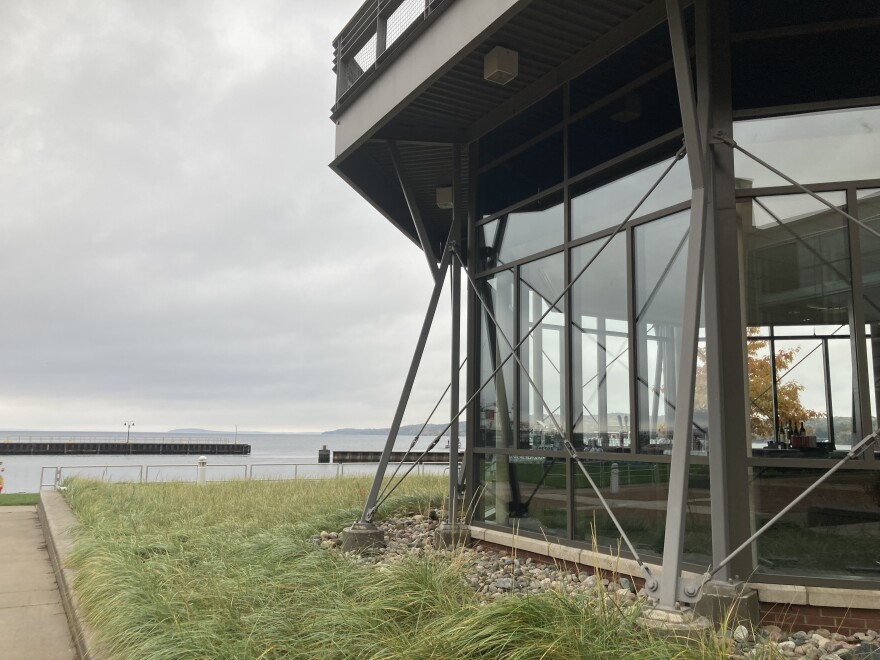At the Freshwater Summit in Traverse City last week, professionals from across the industry gathered to share research on invasive species like silver and bighead carp and Eurasian watermilfoil.
The overall sentiment of the gathering? More invasive species are knocking on the door of the Great Lakes, and in many cases they’re already here. But scientists are getting better at monitoring, controlling and preventing them.
Speakers shared updates on projects like FishPass, which will use movement recognition technology to selectively allow certain species passage up the Boardman-Ottaway River.
Plus, a biologist and a diver from Lake Leelanau Lake Association talked about results from the first few years of using biodegradable burlap barriers to control Eurasian watermilfoil on Lake Leelanau. The project is a collaborative effort with the Grand Traverse Band of Ottawa and Chippewa Indians.
Kevin Goodwin and Annalise Povolo of Lake Leelanau Lake Association said they hope the chemical-free approach could pave the way for controlling the plant on other lakes.
Tammy Newcomb, assistant director of the Michigan Department of Natural Resources, spoke about another invasive species barrier close to getting the go-ahead: a new blockade against invasive carp.
“Right now there's a system of electric barriers that are there to help us deter some of these fish, although the electric barriers do have some fallibilities with them in that they're not exactly perfect,” Newcomb said. “What's being proposed is a new system of deterrence to keep these fish from entering.”
That new system is a $1.1 billion project at a pinch point along the Illinois River near Joliet, at the current location of the Brandon Road Lock and Dam.
The proposal, called the Brandon Road Interbasin Project, would include multiple obstacles to prevent invasive carp from entering the Great Lakes.
We’ve seen some of the proposed obstacles before: curtains of bubbles, electric barriers, and acoustic deterrents.
But the project would also try something new: a flushing lock designed to let vessels pass through while sending turbulent flows of water (and the organisms within it) back downstream in the direction of the Mississippi River.

The Brandon Road Interbasin Project is a partnership between the U.S. Army Corps of Engineers, Illinois and Michigan. After years of prep work, Newcomb says both states have raised the initial funding needed to qualify for federal matching funds.
She says the project is now awaiting Illinois’ signature on a legal agreement required by the Army Corps of Engineers before design and construction can begin.


